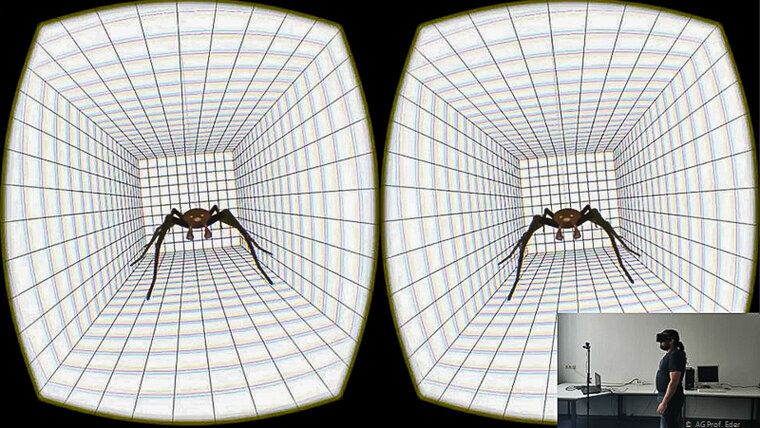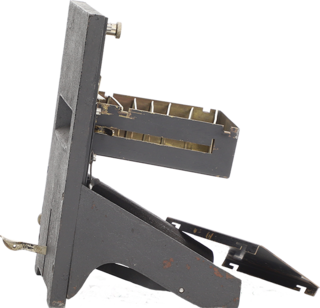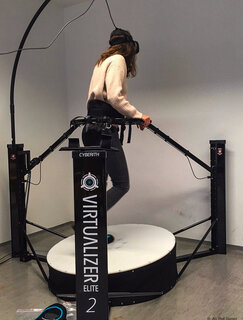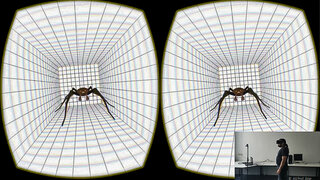
Spider phobia
100 x 150 x 2.5 cm (h x w x d)
Using a virtual reality headset, Eder and colleagues examined the motivational control of whole-body movements in a virtual environment. Experiments showed that initiation of a forward movement was facilitated in response to a (pleasant) flower and a backward movement in response to an (unpleasant) spider, even when the movements resulted in reverse visual motions toward the spider and away from the flower. This result suggest that there is a highly overlearned connection between locomotion and approach/avoidance that is difficult to override. Publication in the journal Motivation Science (https:/doi.org/10.1037/mot0000205).




